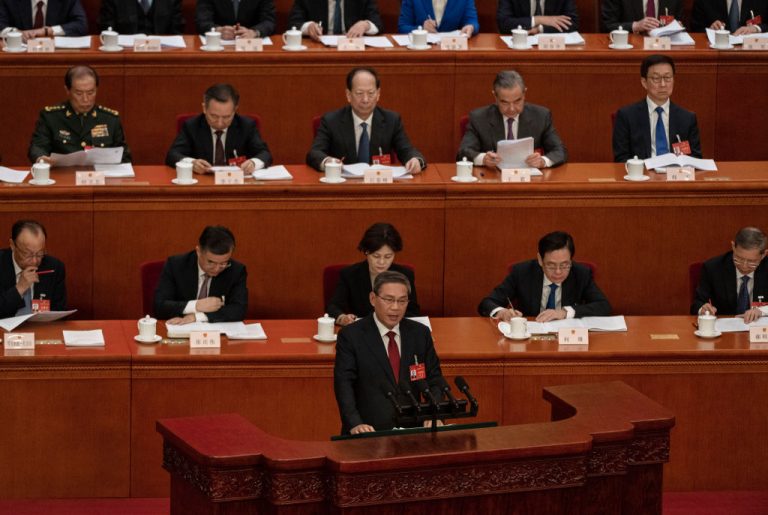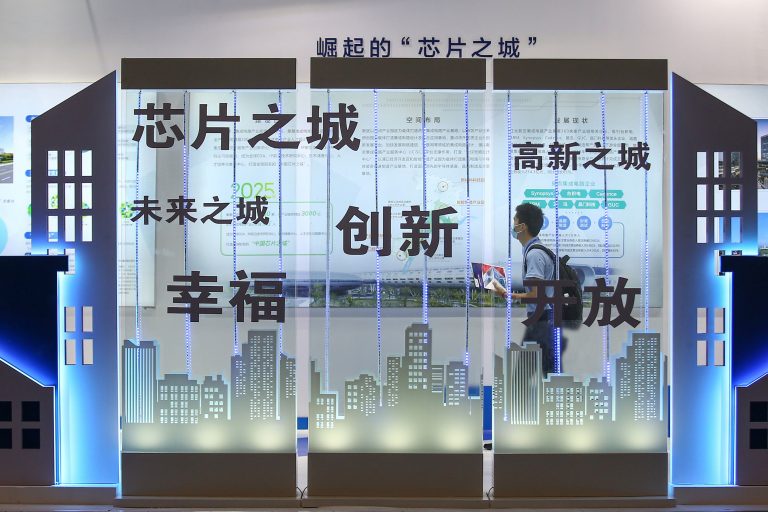On March 5, Chinese Premier Li Qiang laid out an ambitious plan to reshape his country’s economy as it grapples with profound internal and external challenges. Setting a growth target of around 5 percent for 2024, Li revealed the initiative during the annual meeting of the National People’s Congress — China’s parliamentary body.
Li’s “maiden work report” did not shy away from the stark realities facing the country’s national economy. Marred by faltering post-COVID recovery, staggering property sector debts, and escalating geopolitical tensions — particularly regarding Taiwan — the Chinese government has expressed a robust commitment to economic rejuvenation.
“We should not lose sight of worst-case scenarios… We must push ahead with transforming the growth model, making structural adjustments, improving quality, and enhancing performance,” said Li during the event.
RELATED: China’s International Balance of Payments Records First Deficit Since 2019
This year’s growth target, which mirrors last year’s aspirations, reveals a steadfast determination to fuel economic momentum. Analysts interpret this move as a clear signal that Beijing is placing growth at the forefront of its agenda.
Success
You are now signed up for our newsletter
Success
Check your email to complete sign up
“It’s more difficult to achieve 5% this year than last year because the base number has become higher — indicating that the top leaders are committed to supporting economic growth,” Tao Chuan, a chief macro analyst, told Reuters.
House of cards
But China’s financial pivot unfolds against a canvas of intensifying domestic strains and a global economic landscape fraught with uncertainty, notes Tao. The unresolved crises of a battered property market and the burgeoning debt of local governments loom large and threaten to derail the recovery efforts.
This grim scenario has catalyzed demands for a radical overhaul of China’s economic model — one that can steer the nation away from a perilous trajectory akin to Japan’s “lost decade,” said Li during the speech.
“We should not lose sight of worst-case scenarios,” he said during his speech at the Great Hall of the People in Tiananmen Square. “We must push ahead with transforming the growth model — making structural adjustments, improving quality, and enhancing performance.”
Yet, despite the clarion call for transformative change, specifics remain scant. The Chinese leadership is navigating a “delicate balance” between reform and stability — a stance encapsulated in Li’s assertion that stability “forms the basis for everything we do.” The approach is also mirrored in the Chinese government’s financial strategies, advocating a “proactive” fiscal posture and “prudent” monetary policies aimed at invigorating employment and mitigating risks.
In the face of skepticism from international observers, China’s conservative fiscal stance — as reflected in a budget deficit target reduced to 3 percent of GDP — signifies a tempered approach to stimulus measures. The issuance of special ultra-long term treasury bonds and adjustments in local government financing also underscore a cautious yet calculated response to economic headwinds.
MORE ON THIS: China Mulls $139 Billion ‘Special Debt Issuance’ to Stimulate Economy, Long-Term Growth
This debt proposal, which is currently under deliberation by senior policymakers, aims to fund vital projects in sectors including agriculture, energy, supply chains, and urbanization, according to a Bloomberg report. The use of ultra-long sovereign bonds signifies a strategic shift in economic planning to provide long-term funding for its debt-saddled local governments.
A domino effect
Moreover, China has not ignored crucial sectors in defense and technological innovation. The nation is doubling down on technological advancement, removing foreign investment barriers in manufacturing and propelling initiatives in quantum computing and artificial intelligence. All these efforts signal a steadfast pursuit of technological sovereignty, notes Tao.
A 7.2 percent increase in defense spending also aligns with a broader strategic vision — especially amid growing regional tensions concerning Taiwan. Officially known as the Republic of China, Taiwan is a self-ruling nation with its own democratic government. But despite being independent, the mainland Chinese regime claims Taiwan as a rightful part of its territory — vowing to reclaim the island by any means necessary, even if that means using military force.
RELATED: Taiwan Voters Reject CCP’s ‘Reunification’ Agenda in 2024 Presidential Election
However, Li’s ambitious agenda to stimulate growth is not without its critics. Some analysts argue that China’s manufacturing-centric policy will exacerbate existing challenges, from overcapacity to escalating trade frictions.
Data from China’s central bank revealed a slight decrease in the total loans extended to the beleaguered property sector, with a 0.2 percent decline from the previous year. This was contrasted by a significant surge in loans to the manufacturing sector, which saw an increase of 38.2 percent.
As Hu Yuexiao, a chief economist, posits, the shift reflects a deeper transformation. “The pursuit of speed has given way to the change in the model of growth.”
Still, economists are cautioning against China’s push towards the manufacturing of high-tech products — from semiconductors to electric vehicles (EVs) — due to the possibility of overcapacity fueling a new wave of unsustainable and low-quality products.














